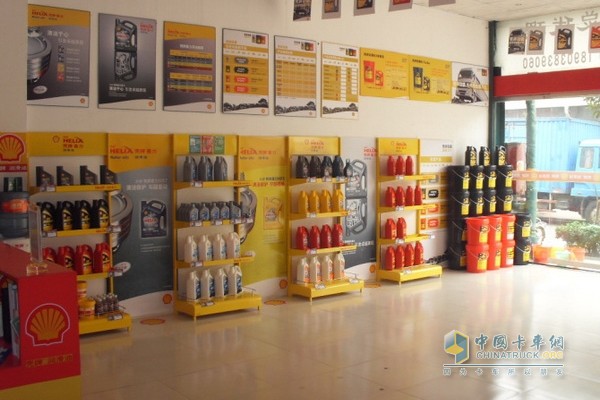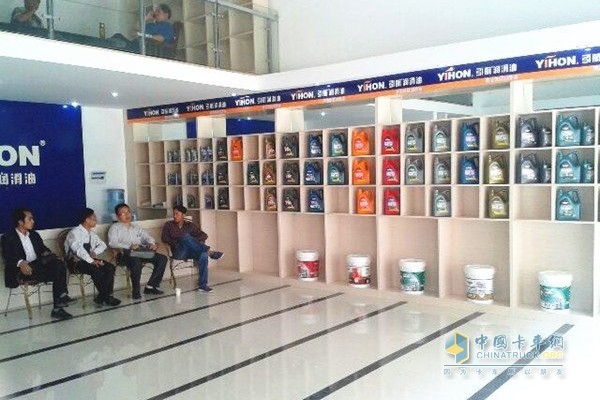Some manufacturers get rid of dealers to face the terminal, and some dealers to register their own brand to do OEM, are eager to control more links to take more initiative and more profits. They have each stretched their fronts and spent a lot of manpower, material resources, and financial resources, and they ultimately did not seem to have achieved their desired goals.
 Lubricant manufacturers and lubricant distributors are actively seeking more effective development
Lubricant manufacturers and lubricant distributors are actively seeking more effective development
This is not in transition. It is changing. On the surface, it is still in the lubricating oil circle, but it has actually entered an area where it is not good for itself. Wen Dao has successively, and the medical industry has specialized in it. Any successful business model must have a clear division of labor in the industry chain in order to maximize value. The core values ​​of the manufacturers are in the “camp†and the focus is on product production and brand operations. The dealer’s core value is “sales†and the focus is on terminal sales and services.
In the end, how do the lubricant distributors transform? The transformation is not the transformation of status, but in the position of the industry chain, fully enlarges its existing advantages, optimizes the upstream and downstream relationships, integrates the resources on the left and right sides, and enhances its own comprehensiveness. Competitiveness and profitability. As a professional manager, the author offers the following suggestions from the dealer's point of view:
First, horizontally extending product longitudinal deepening services
The channel is the dealer's most valuable resource, making full use of existing channel resources and increasing the number of products horizontally. Filters are the easiest products for lubricant distributors, and other automotive wearing parts can also be considered. Achieve "a customer relationship and profitability of multiple products."
The service to the terminal auto repair factory can not stay in the single supply service of the "product supplier", and provide more valuable services for the auto repair factory terminal customers, and strive to transform itself into the operating consultant of the auto repair factory. You can also go to the service garage customer and grab the customer's customer. You will no longer be a simple supplier.
Second, optimize the relationship between manufacturers and innovative cooperation model
The traditional manufacturer cooperation model is the most common product distribution model, and its essence is a simple product sales relationship. This model was formed during the period of strong growth in consumer demand, linking and maintaining the cooperation of manufacturers and merchants within a certain period of time. The product distribution model is a cooperative relationship under the premise of "contrary to the interests of manufacturers." In the period of new markets where market competition has intensified, both parties have become more concerned about their efforts and gains. The simple product sales and purchase relationship ultimately results in the "sales interest" of both parties. There is entanglement.
Looking at industries such as electrical appliances and fast-moving consumer goods, it is initially a simple product distribution model. At this stage, many manufacturers have upgraded their vendor cooperation models to build true vendor integration and open a win-win model. Lubricants industry has many brands in the channel construction and channel management, have learned from the FMCG industry experience and achieved rapid development. Luis, as the first lubricant oil brand in the industry that calls out “real cooperation with dealers,†has absorbed many high-quality distributor partners who are willing to actively improve the manufacturer's cooperation model.
 Manufacturers have upgraded on vendor cooperation model
Manufacturers have upgraded on vendor cooperation model
Third, do a strong category leader over the achievement of regional king
The lubricating oil product line is very long. It is very difficult to subvert the market of first-line brands. However, dealers can do a good job in a certain category, so that he can become the leader of the local market in this product, can enjoy the value brought by this piece of small cake, become the dominant category in this category of products.
Luis has always praised the market strategy of “small markets and big brands†and made our products become a dominant brand in local areas. Starting from a street, to a township, to a county, it gradually eroded. Concentrate all your own strength, and work toward a “pointâ€, and wait for more “points†to become “faceâ€. To build a strong regional brand, we must endure loneliness in the early stage, we must strategically temporarily give up 99% of the market, focus on 1% of the market, give up in order to more firmly occupy.
Lubricants dealer groups will not disappear, but the number will certainly be reduced, the industry concentration will be higher and higher, this is the law of elimination after the market saturation, but also can not stop the trend. Focus on the areas where you are good at, zoom in on your existing strengths, look for manufacturers with more stable company relationships, integrate left and right resources, and be the hegemons of products and regional kings. To do this, you have successfully transformed!
1.Easy to change the filter bag, separate compartment installation
2.Complete ash removal: the chambered continuously and automatically cleaned online, reducing the energy consumption of dust cleaning and eliminating the "dust reattachment and out of control".
3.Low emission concentration: according to different working conditions, choose different bag filter materials, and the dust removal efficiency can be 99.5%.
4.Low resistance, reduced dust removal power dissipation: higher cleaning effect, so that the equipment is in low-resistance operation, and the filtered air volume is larger.
Dust Filter,Dust Collection Equipment,Bags With Long Lifetime,Dedusting Equipment
XinxiangHexie Feed Machienry Manufacturing Co.Ltd , https://www.feedmill.nl